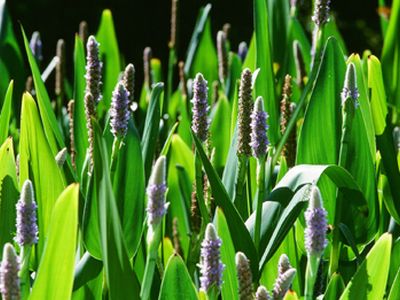The Royal Parks' team in Richmond Park produces a monthly diary (August issue below) which is displayed on the Park's public noticeboards. If you are a member of the Friends and would like to receive these monthly diaries by email, please send your name and email address to cottonbarbara@yahoo.co.uk
August in the Park
Parking charges cancelled The plans to introduce parking charges in Richmond Park have been reversed by the new coalition government. Tourism and Heritage Minister John Penrose announced on Monday 5th July that the Government would now look at different ways of raising money in the Park. He said: “Given the current economic climate, we will need to find alternative sources of income instead, but we will try to respect local residents’ views and preserve the environment of these wonderful and precious spaces too.”
Green Flag Award Last month Richmond Park was awarded a green Flag for the fourth year running. This national award is given in recognition of achieving the national standard for parks and open spaces in England and Wales.
Oak Processionary Moth This moth, introduced to Britain a few years ago, has a caterpillar with toxic hairs. Thorough inspections resulted in six nests found in the park for the first time last year. This year the total has grown to 300 nests. All nests have been removed in an attempt to prevent the moth spreading. Surveying and control will continue as part of combined efforts co-ordinated by the Forestry Commission.
Ragwort This yellow grassland flower is an agricultural pest because it is poisonous to livestock. However, is also provides a useful nectar and food source for insects, attracting numerous butterflies and Cinnabar Moth caterpillars. The decision to control Ragwort (or not) always attracts debate, and arguably there is no right answer. The Royal Parks chooses to uproot it as late as possible, after the flowers have bloomed, but before it sets seeds. We concentrate our efforts along horse rides but in more remote areas, we may leave a few plants to allow insects their food.
Acute Oak Decline is a new form of Oak decline increasingly reported in southeast England, the Midlands and Wales. It is typified by “bleeding” lesions on the trunk of the tree. In the next few weeks, staff from Forest Research will be taking samples of these lesions from Oaks in different areas of the Park, to contribute towards identifying the casual bacteria. Consequently, square areas of removed bark may become noticeable on a few of our trees.
The Isabella Plantation in August
Flowering shrubs worth seeking out include:
Magnolia grandiflora – Occupies a secluded glade to the south of Thomson's Pond. It has large white flowers with a delicious fragrance set amongst glossy evergreen leaves. Petals fall to reveal striking seed heads.
Clethra alnifolia – The Sweet Pepper Bush, also fragrant, is opposite the tall pine below the gate to Broomfield Hill and also below Thomson’s Pond.
Hydrangea quercifolia – on the Birthday Mound and elsewhere, has panicles of white flowers, and foliage resembling coarse oak leaves, which takes on rich Autumn colours later in the year.
Hydrangea paniculata 'Tardiva' – also bears panicles of white flowers, and is set in woodland near the gate towards Pen Ponds, and elsewhere in the Garden.
Hydrangea aspera subsp. Sargentiana – Grows in Wilson’s Glade in the north east corner, this upright gaunt shrub bears broad heads of flowers from late summer to mid-autumn, the inner ones are blue or deep purple, the outer ones are large and white.
Sorbaria kirilowii – Also found in Wilson’s Glade produces white flowers in large conical panicles throughout July and August.
Heptacodium miconioides – Is a vigorous shrub that bears lightly scented clusters of white flowers throughout late summer and early autumn. It can be found growing below Thomson’s Pond and also on the Birthday Mound.
Aesculus californica – Grows behind the toilets set back by the service gate. This wide spreading shrub produces fragrant white-pink tinted flowers.
Summer flowering shrubs in the Heather Garden include varieties of Erica vagans, the Cornish Heath, such as 'Mrs. Maxwell' – dark pink; 'Rosea' – light pink; and 'Cornish Cream' – cream. Several varieties of Calluna vulgaris have coloured foliage, such as 'Gold Haze' – white flower and gold leaf; and 'Robert Chapman' – purple flower with bronze foliage. Daboecia cantabrica has white or purple waxy bells.
Along the streams many native marginal plants are in flower, such as Purple and Yellow Loosestrife, Meadowsweet, Greater Willowherb and Hemp Agrimony. These wild flowers, along with the heathers, attract many butterflies. Elsewhere, streamside clumps of Hemerocallis, the Day Lily, produce a succession of tall yellow or orange trumpet-shaped flowers throughout July and August; each flower lasting only a day.
Thomson's Pond and the Bog Garden have fine stands of Pontederia cordata, the Pickerel Weed, with spikes of blue flowers amongst erect spear-shaped leaves. Thomson’s Pond’s waterlilies are in flower and dragonflies patrol their territories. In the Bog Garden look out for the creamy–yellow flowers of kirengeshoma palmata which show until the autumn.
A motorised Wheelchair, which makes the job of pushing considerably easier, may be borrowed for use within the Garden between 9.00 and 15.00 on weekdays. Please ring 020 8948 3209 by noon on the day before it is required.
Isabella Plantation Garden Walks 2010
You are invited to join the gardeners for guided walks throughout the year. Walks will take place on:
August: Friday 6th, 20th (A history of the Plantation) and 27th, Sunday 15th
September: Friday 3rd and 24th, Sunday 12th
Walks last about 1.5 hours and are free of charge. Meet inside the Garden by the gate from Broomfield Hill car park at 11.00a.m.
The Royal Parks' News and Isabella News are copyright The Royal Parks


